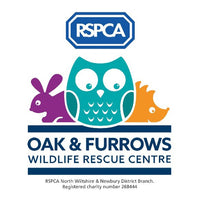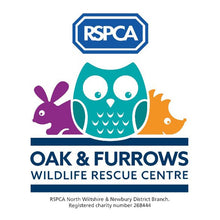Compassionate Care for Animals: A UK Wildlife Rescue Story
The majestic beauty of wildlife in the United Kingdom is truly awe-inspiring. From the sweet melody of the songbird to the powerful flight of the kestrel, our natural environment is teeming with enchanting creatures. Unfortunately, these very animals often find themselves in harm's way due to factors beyond their control. But there's hope. Thanks to the work of wildlife rescue centres and their dedicated teams, injured, sick, and orphaned animals receive the care they need to eventually return to their natural habitats. This is a story of compassionate care for animals - a UK wildlife rescue story.
The Need for Wildlife Rescue in the UK
In the verdant expanse of the United Kingdom, we are fortunate to share our spaces with a broad spectrum of wildlife. Regrettably, these creatures often find themselves in precarious situations. Factors such as environmental pollution, habitat destruction, climate alteration, vehicular accidents and human intervention put their survival at stake.
The perilous reality of life for our wildlife is disconcerting. Year upon year, an innumerable tally of animals and birds end up injured, abandoned or displaced. Some succumb to illness, others are left exposed to severe weather conditions, whilst many fall prey to predators. It's at this critical juncture that wildlife rescue centres come into play, proving invaluable in the United Kingdom's conservation efforts.
These lifelines for distressed animals provide immediate care and rehabilitation, offering these creatures a second shot at life. By stepping in and offering immediate support, they bridge the gap between survival and demise for our wildlife. They are truly an integral part of our efforts to protect and preserve the natural inhabitants of our environment.
The role that these centres play in our eco-system cannot be underestimated. Offering immediate medical attention and ongoing care to distressed animals, they exemplify the critical intervention needed in the face of adversity. Wildlife rescue centres provide hope in an environment fraught with threats, offering these animals a fighting chance at life. Their work is an essential cog in the larger machinery of wildlife conservation in the UK.
How Wildlife Rescues Operate in the United Kingdom
Centres for wildlife rescue across the UK uphold a steadfast commitment to aid distressed fauna, providing a haven of recovery and rehabilitation. These facilities function through a well-balanced synergy of professional expertise, public generosity, and voluntary endeavours. They are operational twenty-four hours a day, with a single-minded focus on providing prompt medical care to wildlife in distress.
Each centre consists of a devoted team, which can include trained veterinarians and veterinary nurses, supplemented by wildlife carers who offer their valuable time and skills voluntarily. They bring to the table a vast repository of knowledge and an innate empathy for wildlife, making them the perfect caretakers for these fragile lives.
The primary focus of these centres is the immediate stabilisation of the animals brought into their care. This involves a meticulous diagnosis and targeted medical intervention to alleviate suffering and establish a foundation for recovery.
It's worth noting that these centres operate predominantly on a non-profit basis, with their life-saving work heavily reliant on the goodwill of the public. Financial support, in the form of donations and grants, forms the backbone of their funding. Contributions, both monetary and in-kind, ensure that these centres can continue providing their invaluable service, giving wildlife a second chance at life.
Operating these centres also requires an immense amount of voluntary effort. Volunteers provide crucial support in a myriad of ways - from hands-on care of the animals to administrative tasks and fundraising activities. Their tireless work fuels the ongoing operation of these centres, playing a key role in their success.
The operation of wildlife rescue centres in the UK is a testament to the power of collective effort. By combining professional care, voluntary support, and public generosity, these centres represent a beacon of hope for our country's wildlife, ensuring their survival and flourishing in the wild.
The Process of Rehabilitation: The Road to Recovery
The journey from distress to liberation for our wildlife centres around one key process – rehabilitation. Following the provision of immediate medical care, the trajectory of recovery begins in earnest for these resilient animals. This phase of healing is multifaceted, as it aims to restore not only the physical well-being of these creatures, but also their instincts and abilities to survive in the wild.
This phase might span a considerable length of time, with the complexity of rehabilitation varying widely based on the condition and species of the animal. It may necessitate the teaching of survival skills to orphaned animals, or the rebuilding of physical strength for those who have suffered injuries.
For instance, a fledgling bird might need to be taught the basics of flight, whilst a young fox cub might require lessons in hunting. Similarly, an injured badger may need help to regain its agility and strength. The process is painstaking, requiring infinite patience and care, but it's all worth it when these animals are finally ready to reclaim their place in the wild.
Throughout this time, each animal's progress is under constant scrutiny. The dedicated team monitors the minutest aspects of their health and behaviour to ensure that they are indeed prepared for the challenges that await them in their natural habitat.
The role of rehabilitation in wildlife rescue can't be emphasised enough. It forms the crux of the journey from rescue to release, paving the way for our wildlife to return home – to the wild where they belong. This critical process reinforces the mission of our wildlife rescue centres, and their unyielding commitment to the conservation and welfare of the UK's treasured wildlife.
The Art and Science of Reintroduction to the Wild
Achieving a successful re-entry into the wild for rescued wildlife is a meticulous endeavour, marrying the precision of science with the sensitivity of art. The endpoint of the lengthy recovery and rehabilitation process, this phase requires careful deliberation and preparation to ensure a smooth transition for the animal back into its natural environment.
Crucial considerations that guide this process include a thorough health assessment of the animal, verifying that it has indeed regained its optimum physical condition and is fully equipped to fend for itself. Equally significant is the suitability of the intended release site. It's essential to establish that the selected habitat mirrors the animal's natural dwelling, providing all the necessary elements for its survival and well-being.
Presence of conspecifics, or animals of the same species, is another key factor to consider during reintroduction. This guarantees that the released animal can engage in social behaviour and breeding, integral aspects of life in the wild. Moreover, the timing of the release is carefully chosen, aligning with seasonal patterns and the biological rhythms of the species.
Often, a soft-release method is employed. This method eases the transition for the animals, where they continue to receive food and shelter support as they acclimatise to their new surroundings. This cautious approach minimises the stress of re-entry, providing the rescued animal with the best possible start to its new life.
It's evident that reintroducing rescued wildlife back into the wild is a thoughtful blend of science and sensitivity. It's a testament to the commitment of the wildlife rescue centres across the UK, ensuring that every aspect of the animal's journey from rescue to release is handled with the utmost care and expertise. Each successful reintroduction underlines the vital role these centres play in the broader narrative of wildlife conservation, contributing significantly to the preservation of the UK's diverse and precious fauna.
The Role of Public Support in Wildlife Rescue Efforts
Public backing plays a cardinal role in empowering the laudable endeavours of wildlife rescue centres across the UK. This support can be realised in myriad ways, with each act contributing significantly to the mission of wildlife conservation. Financial contributions are an integral part of this support. These crucial funds aid in the seamless functioning of these centres, ensuring they continue their invaluable service, and facilitating the rescue, recovery, and reintroduction of animals back into their natural habitats. In-kind donations, too, are vital, with items ranging from food supplies to medical equipment significantly aiding the centres' operations.
Equally, education and awareness are pivotal. By understanding the challenges faced by our local fauna, we can actively participate in reducing harm. Such enlightenment empowers us to act as stewards of our shared environment, encouraging coexistence and minimising our negative impact on wildlife. Learning about the appropriate action to take if we encounter injured or orphaned animals can also be beneficial, ensuring that these animals are given the best chance of survival.
Volunteerism, another form of public support, is a lifeline for these centres. Volunteers lend their time and skills to numerous tasks, from providing hands-on care for the animals, to assisting with administrative duties and fundraising efforts. Volunteering also offers a unique opportunity for individuals to gain a deeper understanding of wildlife conservation, further fostering a sense of responsibility towards our natural environment.
Public support, therefore, is the beating heart of wildlife rescue efforts. Each donation, volunteer hour, and act of education can make a significant difference in the survival and well-being of our wildlife, underscoring the vital role we all play in preserving the diverse tapestry of the UK's fauna.

